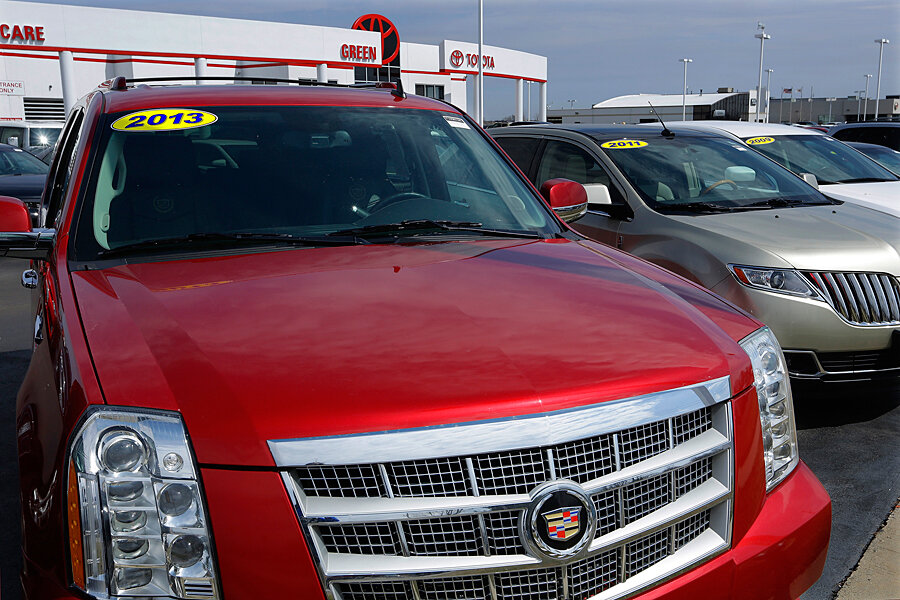Rearview cameras to be required on cars. Advocates ask: What took so long?
Loading...
All new cars, light trucks, and buses sold in the US will be required to have rearview video cameras by May 2018, per a new government rule announced Monday that is aimed at reducing incidents of drivers backing up into pedestrians.
The new requirement applies to all vehicles under 10,000 pounds and manufactured after May 1st, 2018, according to the ruling from the National Highway Traffic Safety Administration (NHTSA). The majority of vehicles for which the rule applies already have such video systems or are expected to have them before 2018, the agency says.
Each year, backover accidents result in an average of 210 fatalities and 15,000 injuries, according to NHTSA. Children under the age of five account for about 31 percent of deaths from those accidents each year, and adults over the age of 70 account for 26 percent, the agency says.
NHTSA says the new regulation is expected to save between 58 and 69 lives each year, once all relevant vehicles on the road are fitted with rearview cameras.
"Rear visibility requirements will save lives, and will save many families from the heartache suffered after these tragic incidents occur," NHTSA's acting administrator, David Friedman, said in a statement.
The new rule – though welcomed by public advocacy groups across the board – was also critiqued by those groups for not having been issued soon enough, Reuters reported. In 2008, Congress had ordered NHTSA’s umbrella body, the Department of Transportation, to issue a rule requiring vehicles to have rearview video systems before 2011, but action on the order was delayed multiple times.
"While the administration delayed the rule, more children died in back-over accidents," Robert Weissman, president of Public Citizen, said in a statement. "The cost of regulatory delay, in human lives, could hardly be more clear than it is today."
The 2008 law, called the Cameron Gulbransen Kids Transportation Safety Act, was named for a toddler who was killed in 2002 when his father accidentally backed over him with an SUV that did not have a rearview camera system. The father said he checked his rearview mirrors and sideview mirrors before backing up, but none of the mirrors covered a blind spot at the car’s back.
NHTSA said in a statement that it “took time on this regulation to ensure that the policy was right and make the rule flexible and achievable.” The agency also noted that rearview cameras have been factored since last year into its “5-Star Safety Ratings” system, a consumer guide to cars, and credited the measure with helping to increase consumer demand for cars that have such video systems.
The Alliance of Automobile Manufacturers, a trade group, estimates that about two-thirds of the top 50 best-selling cars on the market have rearview video systems, The Detroit Free-Press reported.
Per the new rule, the video systems would have to let drivers see a 10-foot-by-20-foot zone directly behind their vehicles, as well as meet other requirements including image size, response time, and durability, according to NHTSA.
The ruling was issued following a three-year increase in traffic-accident-related pedestrian deaths. In November, a NHTSA report found that pedestrian deaths had increased by about 6.4 percent from 2011 to 2012, with 4,743 pedestrian deaths in 2012, as well as another 76,000 pedestrians injured. It was the third year in a row that the number of pedestrian fatalities had gone up.
About 40 percent of the pedestrians killed in traffic accidents had been drinking alcohol, a percentage consistent with previous years, the report said.
The same report also found that the total number of traffic accident deaths increased about 6 percent from 2011 and 2012, though the number – 30,561 people – was still at an almost historic low since 1949. The report did not identify a ready explanation for the uptick in traffic fatalities between the two years.








